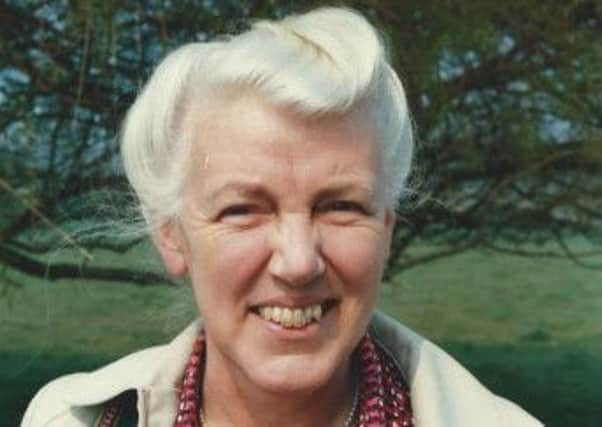Obituary: Aylwin Clark, teacher


Alywin Clark was one of the most respected and loved teachers at St Leanords School in St Andrews. She taught history with an infectious enthusiasm and generations of girls knew her simply as “Bunny”. Clark was involved in many aspects of the school’s activities – ornithology, history expeditions and organising local pageants – as well as heading informal discussions in her home on the history of art and local issues. Clark was appointed head of the history department and senior mistress, filling both roles with zeal and imagination.
When she retired in 1984 there were many tributes to her contribution to the advancement of the school’s academic reputation. It concluded: “She lived for history.”
Advertisement
Hide AdAdvertisement
Hide AdElspeth Miller (now Lady Abernethy) was taught by Clark. “I remember Bunny with great pleasure,” she recalled. “She was, quite simply, the most wonderful teacher – one of the best. She involved the entire class in any lesson or project, always finding something positive to say so that everyone was involved and encouraged. We all loved her and she was a wonderful human being.”
Sydney Aylwin Clark spent much of her youth in Epsom when her father was appointed headmaster of Epsom Secondary School for Boys. She attended, from 1935, Rosebery County Secondary School for Girls. She was awarded a scholarship in 1942 to read History at St Anne’s College, Oxford, and, after a teacher training course, taught at Bedgebury School in Kent. In 1949 she moved north and joined the history department at St Leonards.
Clark was always keen to adapt and accept new teaching practises, for example, inaugurating a Scottish history course for juniors and initiating joint debates with Glenalmond College and other Scottish schools. It was her keenness to involve herself in many of the school’s activities that pupils recall with a special pleasure.
At the time of general elections she organised mock elections, with girls representing the Monster Raving Loony Party, Tories, the far Left and the Dog Lovers’ Party. She ensured there was fair play between all the candidates and the cut and thrust of the hustings provided an early experience of politics.
Her concern to welcome and involve new members of the staff was evidenced in her enlightened introduction tours of St Andrews and the school – explaining the school’s traditions and history.
Clark also wrote widely on various local places of historic interest. In 1977 she published Queen Mary’s House and Those Who Lived There. The imposing 16th-century building is now the library for St Leonards but it is believed to have been where Mary Queen of Scots stayed in the 1560s. She co-wrote, with Hunter Steele, An Enlightened Scot: Hugh Cleghorn in 1992. The subject was the professor of Civil History at the university in the 18th century. Then in 1996 Clark published The McKenzie Sisters: The Lives and Art of Winifred and Alison McKenzie, two artist sisters who taught woodcarving at Dundee University and were well known colourists. Her research and scholarship displayed a diligence and ability as a wordsmith and historian.
It was her teaching at St Leonards that remained central to her active and fulfilling life. She brought to the school a kindness and sympathy and stimulated her pupils through her own knowledge and encouraged them to further their own learning through connected projects. She had a quirky sense of humour which endeared her to pupils – Clark would often write in reports: “She wrestles valiantly” or “Lucky the school that sets such challenges and has such doughty pilgrims to respond to them.”
Clark entertained at home and inspired many with an interest in various subjects not on the standard curriculum. Apart from her love of history, she maintained a keen interest in politics and reading.
Advertisement
Hide AdAdvertisement
Hide AdConversation flowed, often interrupted by Clark’s gleeful laugh – more of a chortle.
Mary James, a former headmistress of St Leonards, was a colleague and also a historian. “Mary was exemplary in her care for others” she told The Scotsman. “She had a critical mind and brought out the best in her pupils. Aylwin was not a Brodie but she carried an air of benevolence and was intellectually inspiring. There was an inherent goodness about her and she had tremendous patience.”
Clark returned south in 2000 to look after her older sister but after her death Clark returned to St Andrews in 2010 where she became a prominent member of the community. She was a devout Christian throughout her life and was much involved in the activities at St Andrews Episcopalian Church in the town.